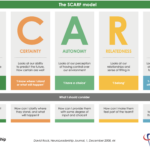Social movements have been the backbone of societal change for centuries. From the suffragette movement to civil rights marches, these collective actions have shaped the course of history. But what roles do these movements play in society?
1. The Catalysts for Change
Social movements are often born out of a need for change. They emerge when a group of people feels that their rights are being infringed upon or that societal norms no longer serve the greater good. It is common that some of these groups are created by young people during their studies. Harvard University is especially known for bringing many successful ones.
Origins and Motivations
Every social movement starts with a spark. It could be an event, an injustice, or a shared sentiment among a group of people. This spark ignites the passion and motivation to challenge the status quo and advocate for change. The motivations behind these movements can range from political and economic reasons to cultural and environmental concerns.
The Power of Collective Action
There’s strength in numbers. When individuals come together with a shared goal, they can amplify their voices and have a more significant impact. Collective action allows for the pooling of resources, talents, and ideas, making the movement more potent and harder to ignore.
2. Shaping Public Opinion
One of the most potent tools of any social movement is its ability to shape public opinion. By bringing issues to the forefront, these movements can influence how society perceives and addresses them.
Raising Awareness
- Media Coverage: Social movements often attract media attention, which can help spread their message to a broader audience.
- Public Discussions: By sparking debates and discussions, these movements can educate the public about specific issues.
- Art and Culture: Many movements use art, music, and literature to convey their message, making it more accessible and relatable.
Influencing Policy and Legislation
A successful movement can lead to tangible changes in policy and legislation. By lobbying lawmakers, organizing petitions, and rallying public support, these movements can push for reforms that reflect their goals and values.
3. Focus on Community and Solidarity
At their core, social movements are about people. They provide a sense of community and solidarity among their members, creating a support system that can weather challenges and setbacks.
Building Bonds and Networks
Social movements bring together individuals from diverse backgrounds and walks of life. These interactions can lead to lasting bonds, friendships, and networks that extend beyond the movement itself.
Empowerment and Validation
Being part of a larger group can be empowering. It validates an individual’s feelings and beliefs, giving them the confidence to stand up for what they believe in and fight for change.
4. Paving the Way for Future Movements
Every social movement, whether successful or not, lays the groundwork for future movements. They provide valuable lessons, strategies, and inspiration for those who wish to advocate for change in the future.
Learning from Past Mistakes
No movement is perfect. There will be mistakes, setbacks, and challenges along the way. However, these can serve as valuable lessons for future movements, helping them avoid similar pitfalls.
Inspiring Future Generations
Today’s movements inspire tomorrow’s leaders. By witnessing the power of collective action, younger generations are motivated to take up the mantle and advocate for their own causes in the future.
The Challenges and Triumphs of Social Movements
While the impact of social movements is undeniable, it’s essential to recognize the challenges they face and the triumphs that mark their journey. These challenges often shape the movement, refining its goals and strategies.
Overcoming Barriers
Every movement faces its set of barriers, be it societal norms, political resistance, or internal disagreements. Overcoming these challenges often requires adaptability, resilience, and a clear vision. It’s these hurdles that test the mettle of a movement, pushing it to evolve and grow stronger.
Celebrating Milestones
Every victory, no matter how small, is a testament to the movement’s impact and relevance. Celebrating these milestones not only boosts morale but also serves as a reminder of what collective action can achieve. From policy changes to shifts in public perception, these triumphs are markers of progress.
The Role of Technology in Modern Movements
In today’s digital age, technology plays a pivotal role in shaping and driving social movements. From social media campaigns to online petitions, the digital realm offers new avenues for advocacy and mobilization.
Digital Mobilization
Social media platforms have become powerful tools for mobilization. They allow movements to reach a global audience, share real-time updates, and organize events. Hashtags, viral videos, and online challenges can amplify a movement’s message, making it resonate with a broader audience.
The Double-Edged Sword of Technology
While technology offers numerous advantages, it also presents challenges. The spread of misinformation, online harassment, and digital surveillance can pose threats to movements. Navigating the digital landscape requires awareness, caution, and adaptability.
The Legacy of Social Movements
Every social movement, regardless of its outcome, leaves behind a legacy. This legacy shapes societal narratives, influences future movements, and serves as a reminder of the power of collective action.
Influencing Cultural Narratives
Movements often influence art, literature, music, and popular culture. They shape narratives, introduce new perspectives, and challenge existing norms. This cultural impact ensures that the movement’s message continues to resonate long after its active phase.
Setting Precedents for Future Actions
Past movements set precedents for future actions. They provide a blueprint, offering strategies, tactics, and insights that can be adapted and refined by future movements.
The Intersectionality of Social Movements
In the modern era, social movements often don’t exist in isolation. They intersect with various other causes, creating a web of interconnected struggles and shared goals.
Understanding Intersectionality
Intersectionality refers to the interconnected nature of social categorizations such as race, class, and gender, which can lead to overlapping systems of discrimination or disadvantage. Recognizing this helps movements to be more inclusive and address a broader range of issues.
Collaboration and Solidarity
By understanding the shared struggles and goals of different movements, there’s potential for collaboration. Movements can support each other, amplifying their voices and maximizing their impact. This solidarity can lead to more robust, united fronts against common adversaries.
Leaders and Grassroots Activists
While collective action defines social movements, the roles of leaders and grassroots activists are pivotal in steering and energizing these movements.
Visionary Leaders
Leaders provide direction, articulate the movement’s goals, and often serve as its public face. Their charisma, vision, and ability to mobilize masses can significantly influence the movement’s trajectory and success.
The Power of Grassroots Activists
While leaders might steer the ship, grassroots activists are the engine that propels a movement forward. Their on-ground efforts, local mobilizations, and personal stories add depth and authenticity to the movement, ensuring it remains connected to its core values and objectives.
Adapting to Changing Socio-Political Landscapes
As societies evolve, so do their challenges and dynamics. Successful social movements are those that can adapt to these changing landscapes, ensuring their relevance and effectiveness.
Evolving Strategies
What worked a decade ago might not be effective today. Movements need to continuously assess and evolve their strategies, ensuring they resonate with the current socio-political climate.
Staying Relevant
Movements need to stay attuned to societal shifts, be it changing demographics, emerging technologies, or new political realities. This ensures they remain relevant, resonating with newer generations and adapting to their concerns and aspirations.
FAQs
Why do some social movements gain more traction than others?
The traction a social movement gains can be influenced by various factors, including the urgency of the issue, the effectiveness of its messaging, media coverage, and the socio-political climate. Additionally, charismatic leaders, influential endorsements, and strategic alliances can also play a role in a movement’s prominence.
How do global events or trends influence local social movements?
Global events, such as economic downturns, wars, or international treaties, can shape the priorities and strategies of local movements. For instance, a global push towards environmental sustainability can energize local environmental movements. Similarly, international human rights campaigns can bolster local efforts to address rights violations.
Are social movements always peaceful?
While many social movements adopt non-violent strategies and emphasize peaceful protests, there are instances where movements might resort to or encounter violence. This can be due to various reasons, including state repression, counter-movements, or internal factions. The nature of the movement’s goals and the political context often influence its approach.
How do social movements finance their activities?
Social movements often rely on a mix of funding sources. These can include donations from supporters, grants from NGOs or international bodies, merchandise sales, and crowdfunding campaigns. Some movements also receive support in kind, such as free legal aid, logistical support, or volunteer labor.
What role do celebrities play in social movements?
Celebrities can bring visibility and credibility to social movements. Their endorsement can attract media attention, mobilize resources, and influence public opinion. However, it’s essential for movements to ensure that celebrity involvement aligns with their core values and doesn’t overshadow grassroots activists’ efforts.
How do governments typically respond to social movements?
Government responses to social movements can vary widely, ranging from open dialogue and policy changes to repression and censorship. The nature of the movement, its demands, the political climate, and international pressures can all influence a government’s reaction.
Summary
Social movements are dynamic entities, shaped by myriad factors and influencing society in countless ways. Their roles are multifaceted, from catalyzing change and shaping public opinion to fostering community and paving the way for future movements. As we navigate the complexities of the 21st century, these movements will undoubtedly play a pivotal role in shaping our collective futures.




